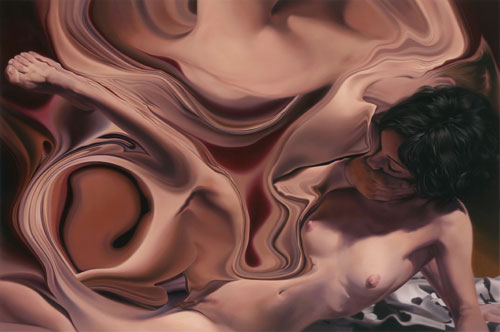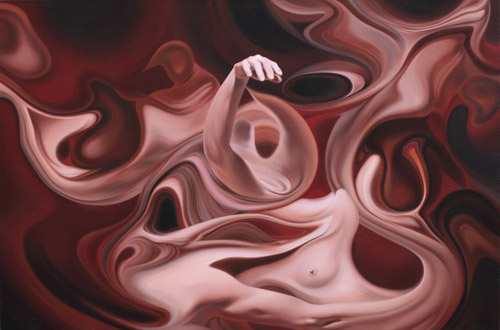The exhibition Fräulein? - from 25th October until 7th December 2013, in
Kunst.Raum.Villach, Austria.
Milan Hrnjazović – Fräulein?
Milan Hrnjazović is mainly a painter. Not long ago he decided to exhibit also his graphic works, which often function as studies for his paintings and thus illustrate the process of work. The artist thinks a lot about social problems and conflicts and occasionally he writes essays on these topics. Those texts also serve as an inspiration for his pictures.
The centre of Milan Hrnjazović’s work is female. „Fräulein“, Mother and Femme Fatale expose themselves in front of the beholder and show their vulnerability, love, despair, ecstasy, tenderness and cruelty. These nudes are by no means an unconditional celebration of femininity and female sexuality. The artist pierces the surfaces of society and the contemporary ways of relationships. He visualises the drama and cruelty behind shiny illusions. This view behind the pretty scene resulted in the concept and name of the exhibition: „Fräulein? “.
In the North of Serbia, „Fräulein“ means „Frajla“ and its meaning differs from the German one. Although „Frajla“ is also a young and unmarried woman, the term stresses her strong interest in social success and fashion. She keeps her relationships and the motifs for them a secret.
In the photo-series Femme Fatale and The Big Game, the female body is shown as an instrument for the achievement of social aims. Milan Hrnjazović interprets the Femme Fatale as the „illusion of fulfilment of a lifetime dream“. In the second photo-series, The Big Game, this theme is outlined even more drastically: fashionable thin women feast on human flesh while they sit in midst of a decadent interior. With this radical images, the artist expresses the society-immanent violence, where human lives are destroyed just because of the very own personal gains.
The paintings on Mother and Child show on the one hand the initial one-to-one: female body parts, eggs and embryos formally melt into each other. On the other hand the artist relates to the stereotype of motherhood in Christian tradition – to Madonna and Christ. Their painful separation is inevitable.
The paintings depicting relationships between men and women show the most turbulent formal language. The series Together yet apart is inhibited by male and female anatomies, whirling into nude- and flesh-coloured swirls, symbolising the physical connection. The faces of this men and women contrast this union and tell about the loneliness of many people in modern relationships.
Milan Hrnjazović displays today’s relationships in a critical way – but without moralising and by speaking through an aesthetically very fascinating and profound figurative language.




